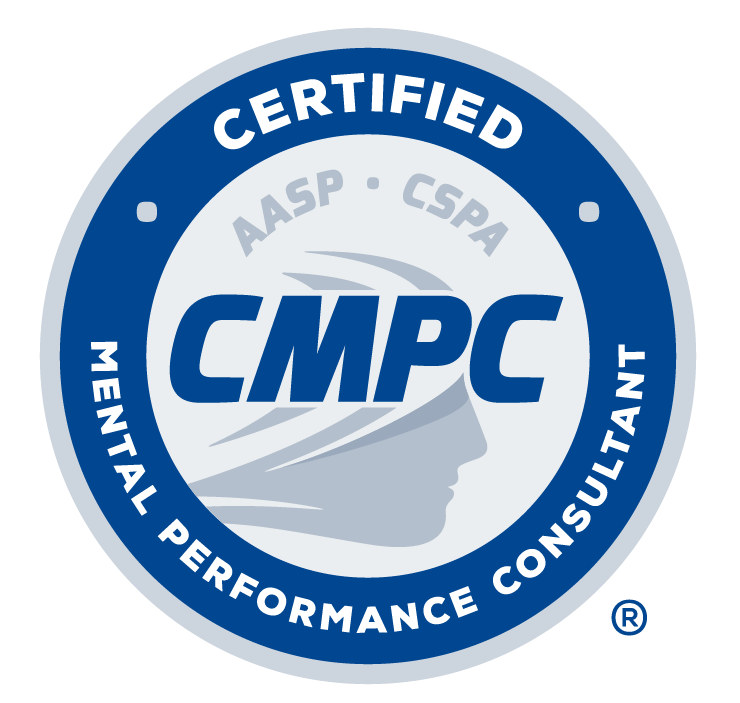Using the Mind to Heal the Body: Imagery for Injury Rehabilitation
Dryw Dworsky, Ph.D. & Vikki Krane, Ph.D.
Bowling Green State University
Being injured is no fun! Often it means that athletes and exercisers are in pain and they are not able to participate in the sport they love. Often when we think of being injured, it means that we need to wait for the body to heal. However, what if you learned that you might be able to speed up the healing process?
Research suggests that maintaining a positive attitude and using mental skills are related to a shorter rehabilitation. In fact, when Ievleva and Orlick (1999) compared slow and fast healers, they found that the fast healers:
- took personal responsibility for healing
- had high desire and determination
- had more social support
- maintained a positive attitude
- used creative visualization
- were less fearful of re-injury upon return to full participation
The goal of this article is to introduce you to creative visualization and explain how you can use it to manage pain and complement your physical rehabilitation. First and foremost, you need to follow all instructions given by your doctor or therapist. Imagery is a skill you can use in addition to your physical rehabilitation exercises.
What is imagery?
- Imagery is creating a mental likeness to something you would like to have occur in real life
- Imagery involves using all of your senses to create or recreate an experience
- Using imagery can:
- increase feelings of personal control
- break up the monotony of physical rehabilitation
- potentially enhance rate of healing
Lessons from Cancer Research on Imagery
Research has shown that cancer patients who use imagery gain many benefits. These include:
- increased coping with therapy
- promoted involvement in self-care
- improved mood
- improved quality of life
- increased sense of internal control
- improve immune response
- decreased post-op pain
- decreased post-op anxiety
- shortened hospital stays
- decreased amount of pain meds
*Each of these benefits will assist individuals who are rehabilitating a sport or exercise injury
(Baider et al., 2001; Burns, 2001; Donaldson, 2000;
Lambert, 1996; Omlor et al., 2000; Troesch et al., 1993)
How to Use Imagery:
- Relax (take a few deep breaths before beginning)
- Close your eyes and create a vivid and convincing image
- Maintain a positive attitude
- Have realistic expectations (imagery can help, but don’t expect a miraculous or immediate recovery)
- Use all of your senses to make the image as realistic as possible
- If your imagery session is not going the way you want it to, stop and start over… always be in control
USING CREATIVE IMAGERY
There are many uses of creative imagery. Whatever your goals, you can create an image that you find helpful. In the following, strategies focusing on pain management and healing are described.
Pain Management Imagery
When our muscles are tense, pain often increases. So one way to reduce pain is to become more relaxed. Examples of relaxing images include:
- imagine tight muscles getting massaged
- see muscle fibers separating
- concentrate on feelings of warmth
- Sometimes it is helpful to distract yourself from thinking about pain. Some distracting images include:
- being on the beach or floating in a pool
- rehearsing sport skills
- Some people associate a certain image with pain (e.g., the color red, sparks or bolts of light). Use imagery to reverse these images.
- if red is associated with pain, image the sore body part turning a soothing pale blue
- focus on the bright light getting dimmer
- Additional examples of pain control images include:
- feel heat/ice on sore body part
- imagine swelling draining out of the body
- imagine pain flowing out of the injured body part
- if you have throbbing pain, image “pain bubbles” leaving the body with each beat
Healing Imagery
- A healing image is one that symbolizes recovery
- It is an image that creates a mindset for healthy healing
- To develop healing images, ask yourself:
- What images do you associate with injury and/or pain?
- What images do you associate with being strong, mobile, or healthy?
- What images remind you of healing?
- These images can be silly; remember that the image only needs to be meaningful to you.
Examples of Healing Images include:
- Broken bone: cement filling in a break in a bone
- Torn muscle: muscle fibers braiding together
- Swollen body part: “bad stuff” draining out of the body
- Injured ligaments: ligaments getting thicker and stronger or tight muscles lengthening, stretching
A Sample Healing Imagery Script:
Take a few deep breaths … Concentrate on your breathing, feel the movements of your body … Just relax, sink into the chair/couch
Now focus your attention on your hurt knee … Notice what it feels like … See what it looks like, the swelling, bruising … Concentrate on reducing the swelling … Imagine a leak in your knee and see some of the fluid drain out … Concentrate on the swelling going down … See your knee returning the its normal size … Concentrate on the swelling going down … As your swelling reduces, notice your knee feeling more normal
Now turn your attention to feeling the knee getting stronger … See the ligaments coming together … Feel the ligaments getting tighter, growing together … Concentrate on the fibers getting bigger, stronger, tighter … Feel your knee getting stronger
Scan the muscles around the knee … Begin concentrating on your quad … Relax the muscle … Feel the muscle become loose and relaxed … To further relax the muscle imagine your quad being massaged … Feel the muscles being kneaded … Notice the relaxed feeling in your quad and all around your knee
Notice how your knee feels … concentrate on feeling relaxed … feeling stronger … You are getting better … enjoy the feeling



